Latest Review

2022 Aston Martin DBX707 review: Phillip Island drive
Aston Martin turns up the heat on its DBX to create a 707-horsepower monster. We give it a thrash on a soaking racetrack because, why not?
Australia’s fastest permanent race circuit and a 700-odd horsepower SUV may seem like odd bedfellows on paper. Let me tell you, from heart-thumping experience, that the Aston Martin DBX707 and Phillip Island Grand Prix Circuit are certainly a peculiar pairing.
I don’t really have time to ponder this in the moment, as I’m hurtling down the Gardner Straight, windscreen wipers thrashing away the lazy drops of rain that continue to fall, speedo clicking two-hundred-and-forty-bloody-hell-that-corner-is-approaching-quickly km/h.
Unsurprisingly the DBX707 is a rocketship in a straight line, with this 2.2-tonne hulk adding pace in eye-opening fashion. As it should, with the 4.0-litre twin-turbo V8 under the bonnet producing 520kW and 900Nm.
Those are figures usually reserved for the top end of the supercar field, but here they are in the shape of a swooping large coupe-inspired SUV body.
Added to the DBX range to serve as flagship, the 707 is likely to be the most popular variant in the two-car line-up. As a boon for Aston Martin’s bottom line, customers will pay the price for the 115kW/200Nm increase in outputs, with Aussie customers required to put $428,400 on the table for the privilege of owning a DBX707 – and that’s before factoring in options and on-roads, naturally.
It's not just more power and an extra $53,702 added to the purchase price that differentiates the 707 from a standard DBX, though.
The flagship model gains an electronic limited-slip rear differential, the choice of either 22- or 23-inch wheels as standard (where the regular DBX only gets 22s), carbon-ceramic brakes, retuned air suspension, tweaked steering calibration, updated active anti-roll bar settings, a launch control system, lairier exterior styling, a redesigned centre console, and finally 16-way power adjustable sports seats for both front occupants.
A nine-speed ‘wet’ multi-clutch automatic gearbox is responsible for transferring power from the charismatic V8 to all four wheels, while Pirelli P Zero rubber is responsible for getting everything to the ground. Pity the Pirellis as they have so much stacked against them, particularly during our brief test on road and track that was marred by the squalls typical to Melbourne’s south-east in late winter.
Before the on-track action, we took the DBX707 out of the gates of Australia’s fastest permanent race circuit and onto the open road. While our route wasn’t particularly a driver’s delight, it did provide important insights into this hyper SUV’s character.
What impressed us the most on-road was its cabin refinement. The route was familiar to Wheels, being a regular transit stage of our annual Car of the Year awards in Southern Gippsland. It's memorable for a distinct reason – the horrific coarse-chip aggregate that makes up most of the road surface.
The imposing footprint that helps the DBX707 get its power to the ground had us thinking that tyre roar would be considerable. Quite the opposite, with the cabin retaining an impressive quietness even on some terrible road surfaces.
Under load, the V8 engine became pleasantly vocal without being brash but at cruising speeds it remained entirely subdued, ticking over at 1500rpm seemingly every time we peered at the tacho, regardless of speed. Wind noise was also suppressed nicely, giving the DBX707 impressive grand touring chops.
If you demand supreme refinement from your hyper SUV, and you should, the DBX707 more than lives up to expectations.
That plushness hits a slight snag with the ride and damping. Given the DBX707’s clear performance bent there is an understanding that it will have a muscular character, but the suspension tune goes a touch too far in our reckoning.
Even at sensible speeds on the public road while in the standard ‘GT’ drive mode, the suspension is working hard to keep the DBX707’s weight contained. It does this by retaining a firm damper setting that never seems able to breathe over the lumps and bumps in the road. Aston Martin has been able to prevent the DBX707 from feeling crashy, but the ride is busy on anything but smooth highway.
The flipside is that body control, particularly during cornering, is exemplary for a vehicle of this stature. There is very little in the way of pitching, with the DBX707 retaining impressive composure through bends.
Inside, the cabin is filled with generous servings of lush leather but there are some ergonomic quirks that we found marred the driving experience a touch. The first is the fact that the engine start/stop button and gear selectors are mounted on the dash.
I’m of above-average height and reach, yet it was a stretch to press them. Then there is the central rotator and touchpad combo that controls the infotainment. It’s an effective if not very handsome solution for navigating the central screen, but can immediately be identified as a generation-old Mercedes-Benz part.
We don’t have an issue with the user experience – quite the opposite with the system being easy to key into and use on the fly – but the borrowed component puts a bit of a tarnish on the DBX’s substantial price tag.
Aston Martin likes to claim this is the most powerful SUV in the world, and it was within its rights to lay claim to that crown right until the moment it came to write this review. Dodge recently announced its deranged Durango SRT is going back into production to give the venerable Hellcat engine a send-off, meaning the Brits have been pipped by three measly horsepower to the title.
Those three extra ponies won’t make the difference today though, with Phillip Island’s surface being notoriously low-grip in these frigid and damp conditions.
Limits of the DBX707’s dynamic abilities and finer details of its high-speed grip can surely be found, but we won’t discover them today. Instead, we get an abundant understanding of its all-weather acceleration abilities, impressive body control, reassuring brakes, and genre-busting steering.
The real centrepiece of the DBX707 though is the engine, which has the fingerprints of former Aston Martin CEO Tobias Moers all over it. The 4.0-litre V8 is a Mercedes-AMG M178, which Moers led the development of when he was the leader of the German performance brand.
In fact, the DBX707 is where the M178 produces the most power, outgunning its in-house AMG applications. To achieve this, the V8 has received new ball-bearing turbochargers, as well as redesigned induction and exhaust systems.
Peak power of 520kW arrives relatively high in the rev-range for a turbo V8 at 6000rpm and while it’s the outright horsepower figure that gives the DBX its new numerical badging, the real hero of the equation is its torque output.
Maximum twist of 900Nm comes on song at just 2600rpm and carries all the way through to 4500rpm.
This gives the DBX707 a low-down thrust that feels more force of nature than mechanical. In practicality, it means the 707 never goes searching for power, with even gentle flexes of the throttle pedal adding numbers to the speedo in quick order. Remarkably, the M178, even in its most powerful guise (barring the cross-plane ‘LS2’ evolution in the GT Black Series) feels remarkably relaxed.
It has the aura of a heavyweight UFC fighter who limbers casually with supreme confidence but is able to shift rapidly on their feet to deploy firepower that will set you on your arse before you even realise what is happening.
Leaving the transmission to its own devices is advisable on-road, where we found it intuitive and smooth during calm driving. Turn the heat up and you can lock it into a full manual mode, which is great for track driving.
Such is the depth of the torque reserve that we moved to short-shifting at several corners – namely the run out of Honda toward Siberia, and the change of direction following MG.
Pirelli’s P Zero tyres were always going to have a hard time keeping 520kW contained, regardless of how damp the surface of the road, but we found they gave up the ghost a little earlier than we would have liked. A surface change during a full application of the throttle on the road resulted in all four wheels breaking into wheelspin.
On the circuit, they never provided us with enough reassurance to really press on. While cognisant that damp conditions aren’t ideal, the DBX707’s all-wheel-drive system was underserved by the P Zeros as they weren’t able to match the car’s performance.
It is worth noting though, that when grip was relinquished, the underlying chassis balance was impressive, with a natural progression of yaw that was easy to predict and catch.
Where the tyres left us wanting more, we were mightily impressed by the standard carbon-ceramic brakes, which measure 420mm in diameter up front, and 390mm at the rear.
There is a wooden firmness typical of the compound on-road, but when pushed on track we found them reliable, reassuring and able to haul the DBX707 down from significant speed with remarkable efficiency.
But the real jewel in the DBX707’s dynamic crown is the steering, which is completely out of character for an SUV. Feedback through the wheel is crisp and clear, and there is a just-right weighting that deserves kudos.
The steering is super direct, incredibly accurate and bolstered by a surprisingly quick rack. Much like the suspension tune, this hampers the DBX707’s grand touring chops but it more than makes up for it by giving the biggest Aston Martin you can buy an on-track character more akin to Gaydon’s sportscars.
Aston Martin hasn’t reinvented the hyper SUV genre with the DBX707 but it has managed to build a seriously compelling addition to the growing segment – and it just may be the financial saviour the company needs.
2022 Aston Martin DBX707 specifications
Score breakdown
Things we like
- Sharp steering
- Ultra-refined noise suppression
- Torque, torque, more torque
- Malleable chassis
Not so much
- Stiff suspension tune in GT
- Can overpower tyres easily
- Man, that’s a lot of weight
- Cabin ergonomic quirks
News
-
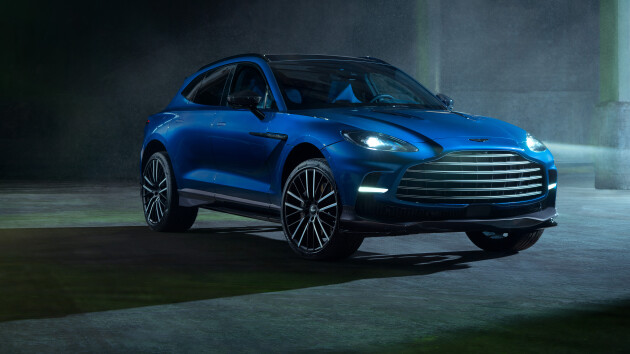 News
NewsAston Martin DBX707 revealed
Aston's flagship SUV is set to pack a knock-out punch
-
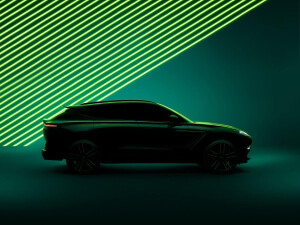 News
NewsAston Martin teases new DBX 'S'
A teaser image of Aston’s upcoming high-performance DBX SUV reveals an aggressive new look
-
 News
NewsAston Martin sales to be 50 per cent electric by 2030
Aston will begin its transition to electric power in 2025 with an electric DBX and a new electric sports car
-
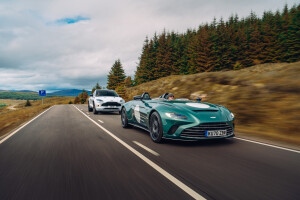 Features
FeaturesInto the Scottish wilds with an Aston Martin Speedster and DBX
What better way to frame the past, present and future of Aston Martin than a bracing blast through the Scottish Highlands with the Speedster and DBX
-

Aston Martin range updated for 2022 as brand launches revised online configurator
-

Aston Martin targets women buyers with DBX
-

Aston Martin DBX revealed: British brute becomes brand’s first-ever SUV
-
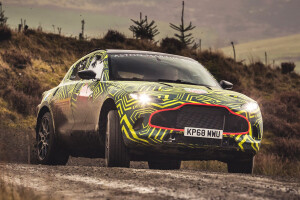
2019 Aston Martin DBX breaks cover, but not camo


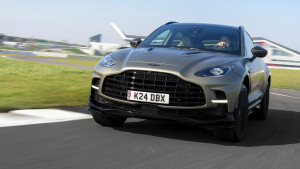

.jpg)